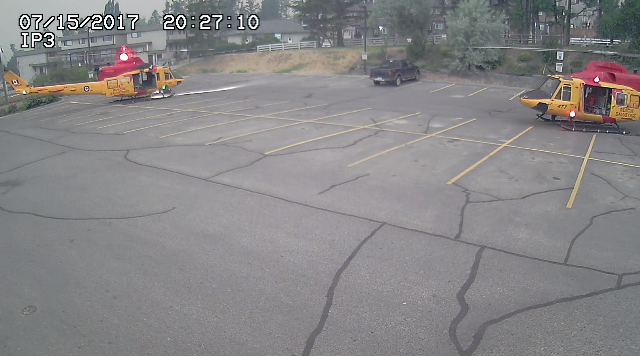By Erin Toews
The staff were hired and the training was complete. After months of planning, the Cariboo Memorial Hospital security team was eager to get started. The new service was set to launch on July 10 2017, providing welcome 24/7 security coverage at the Williams Lake hospital for the first time.
Who could have predicted that, instead of starting their new jobs, the new security team and other residents of Williams Lake would be ordered to evacuate? It was to be a record fire season in B.C. and the impacts were felt across Interior Health. Over the course of the summer, close to 880 patients and home health clients would be evacuated, to be cared for in other facilities.
With communities on evacuation order, and hearing news of looting in some areas, Interior Health’s Protection Services team worked to ensure facilities were protected without having security officers remain on site. Facilities were remotely secured and access cards were temporarily suspended. Anyone requiring access to Cariboo Memorial Hospital or One Hundred Mile Hospital advised Protection Services, who could remotely open doors or reinstate access for individuals on an as-needed basis.
Remote video patrols of the evacuated facilities were also performed regularly from the security office in Kelowna.
Meanwhile, the new Cariboo Memorial security officers remained in contact with Paladin management, the contracted security provider, throughout the evacuation order period. “As soon as repatriation planning began, they were scheduled to start working at Cariboo Memorial,” says Andrew Pattison, Manager of Protection, Parking and Fleet Services. “The security officers returned home and quickly reported for their first shifts, some without much time to settle back home, working long hours to maintain security coverage in the initial days while the remainder of the team worked to return home.”
Although these actions went a long way in keeping the facilities safe, for a team that is used to being heavily involved in major incidents, Andrew says it was tough feeling trapped on the sidelines wanting to do more.
“I know myself and my security/protection colleagues all wished we could have done more right out of the gate,” he says. “But given the remoteness and facilities that were impacted, there wasn’t much we could do. We remained on standby to assist where we could.” “When Logistics requested access to a fleet truck that was not being used in Salmon Arm, my colleague and I drove out from Kelowna on a Sunday afternoon to pick it up and deliver it to Kamloops, so it could be used to move beds, air filters, and other equipment around our facilities as needed. We wanted to help and it felt like the least we could do.”
Security was one part of a massive response across Interior Health. In total, 19 hospitals, health centres and residential care homes were evacuated due to the wildfires. “Many people were left devastated by this emergency event and it was essential for their sense of security that we were able to ensure patients, clients, and residents in our care were never at risk,” said Interior Health President & CEO Chris Mazurkewich.
“While the wildfires were beyond our control, we were able to make sure patients were evacuated safely and well taken care of even when we had to improvise and make the best of limited space and supplies.”
Erin Toews is a Communications Consultant at Interior Health.


